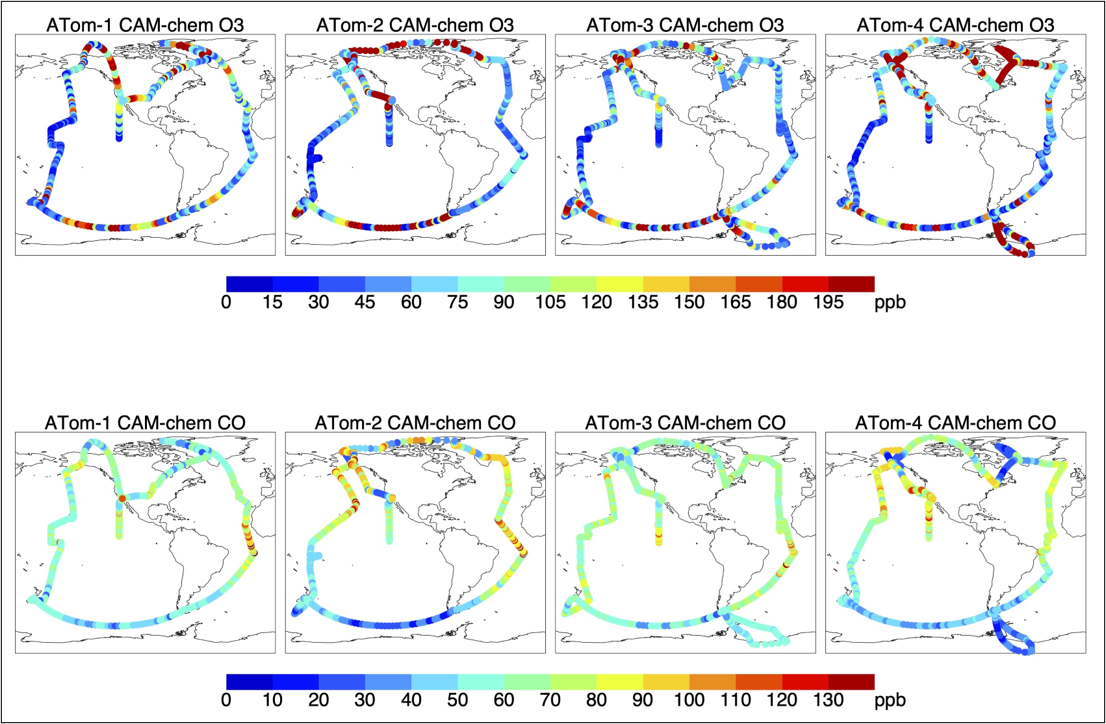The ORNL DAAC recently released the following Atmospheric Tomography Mission (ATom) dataset by Emmons, L., et al. (2021):
ATom: CAM-chem/CESM2 Model Outputs Along Flight Tracks, 2016-2018
This dataset contains CAM-chem (Community Atmosphere Model with Chemistry) model outputs along ATom flight tracks. CAM-chem is a component of the Community Earth System Model Version 2 (CESM2) and is used for simulations of global tropospheric and stratospheric atmospheric composition and for studies of chemistry-climate interactions. In general, CAM-chem uses the MOZART chemical mechanism, with various choices of complexity for tropospheric and stratospheric chemistry. For this dataset, CAM-chem used the MOZART-TS1 chemical mechanism, and the model was nudged to reanalysis meteorology from MERRA2.
The Atmospheric Tomography Mission (ATom) is a NASA Earth Venture Suborbital-2 mission to study the impact of human-produced air pollution on greenhouse gases and on chemically reactive gases in the atmosphere. ATom deployed an extensive gas and aerosol payload on the NASA DC-8 aircraft for systematic, global-scale sampling of the atmosphere, profiling continuously from 0.2 to 12 km altitude. Around-the-world flights were conducted in each of four seasons between 2016 and 2018.
Additional data from ATom and other relevant links can be found on the ORNL DAAC's ATom Project Page.
Citation: Emmons, L., F. Lacey, and R. Schwantes. 2021. ATom: CAM-chem/CESM2 Model Outputs Along Flight Tracks, 2016-2018. ORNL DAAC, Oak Ridge, Tennessee, USA. https://doi.org/10.3334/ORNLDAAC/1878

